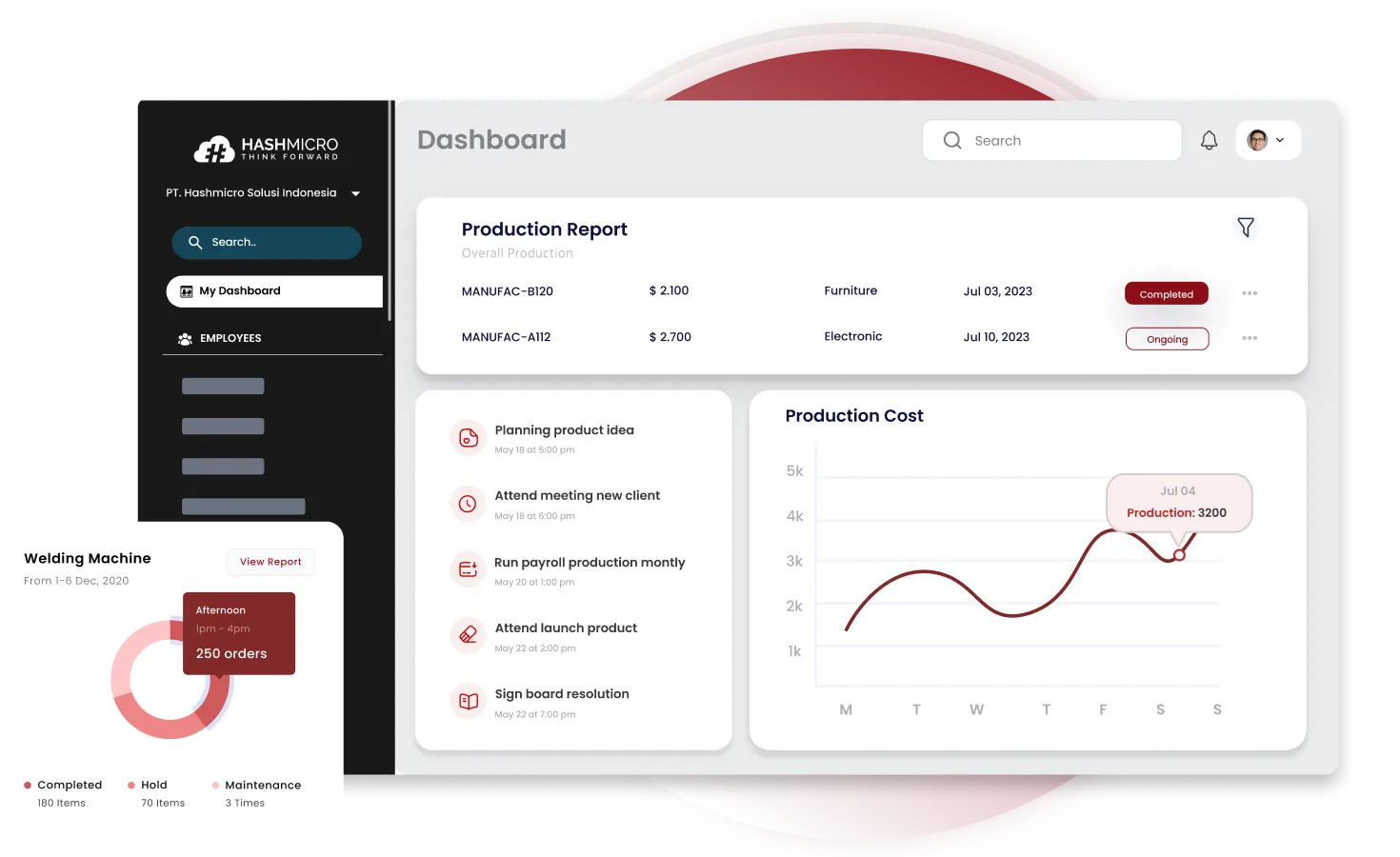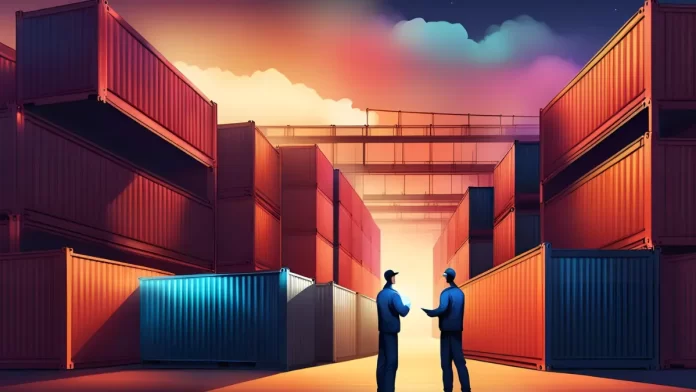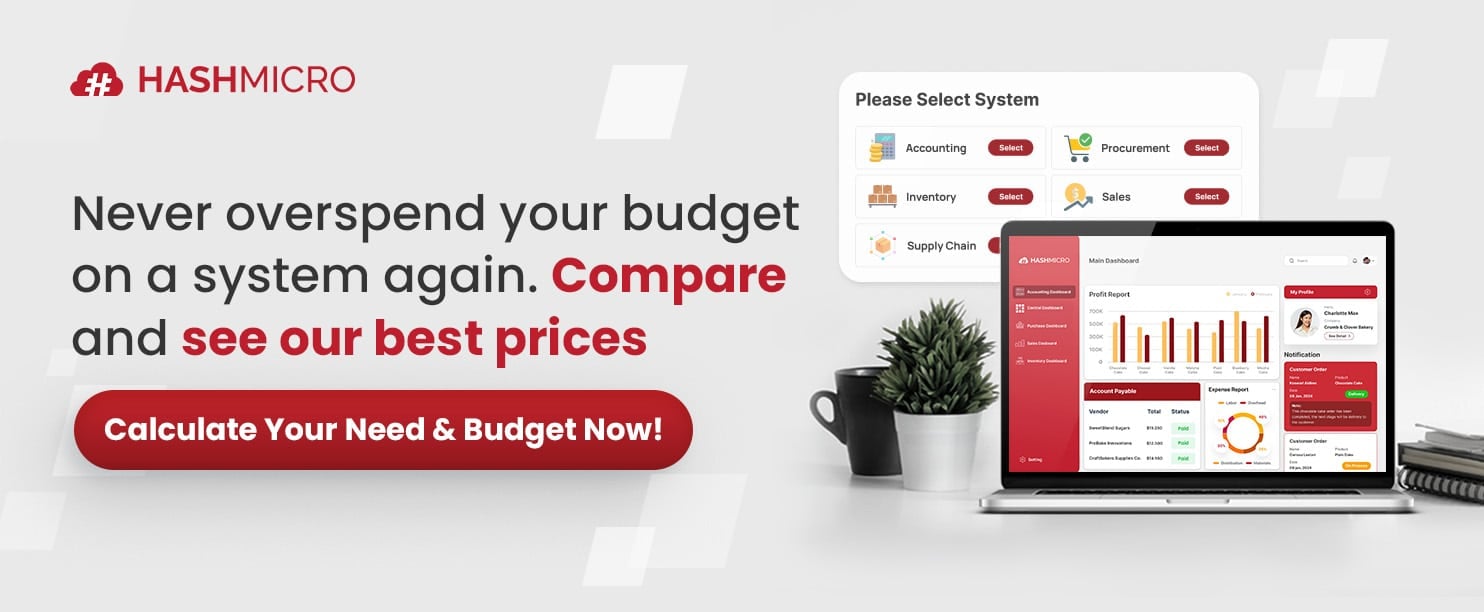Did you know? A recent study in Malaysia revealed that well-managed container warehouses significantly enhance operational efficiency, with some facilities achieving up to a 20% reduction in handling times and a 25% improvement in space utilization. These findings highlight the critical role of efficient container warehouse management in optimizing supply chain performance and reducing costs.
This article explores the key aspects of container warehousing in Malaysia, covering essential characteristics, technological integration, and sustainable practices that enhance logistics efficiency.
Discover how HashMicro’s Warehouse Management System streamlines container warehouse operations, offering real-time tracking, optimized storage, and smarter inventory management. Keep reading to unlock the full potential of your container warehouse!
Key Takeaways
|
Table of Content
Content Lists
What is a Container Warehouse?
A container warehouse is designed to store shipping containers, goods, and cargo for streamlined logistics and distribution. It is a hub for managing imports, exports, and domestic shipments, ensuring efficient handling and organization of containerized products.
Container warehouses are crucial in optimizing supply chain operations by providing secure storage, facilitating quick loading and unloading, and enhancing inventory management. These facilities improve logistics efficiency, reduce transit times, and support businesses in more effectively meeting market demands.
Exploring the Landscape of Logistics and Warehousing in Malaysia
Malaysia’s logistics and warehousing industry has experienced significant growth, driven by its strategic location and the expansion of its industrial and e-commerce sectors. A key component of this industry is the container warehouse, which has become integral to the country’s logistics infrastructure.
Container warehouses in Malaysia are designed to accommodate large volumes of goods, providing ample storage space for businesses with extensive inventory requirements. These facilities are equipped with advanced security systems to ensure the safety and integrity of stored goods and address concerns about potential losses or damages.
Efficient inventory management is key, with container warehouse Malaysia using advanced technologies and warehouse putaway strategies to track, organize, and optimize storage. This ensures items are placed in optimal locations, streamlining operations and boosting supply chain efficiency.
Moreover, container warehouses in Malaysia serve as a logistics hub, enabling businesses to handle domestic and international operations effectively. Services such as freight forwarding, customs clearance, transportation, and distribution provide end-to-end solutions for logistical needs, enhancing overall operational efficiency.
Key Characteristics of Container Warehouses in Malaysia
Container warehouses in Malaysia are built to support modern logistics and supply chains, offering advanced features tailored to diverse business needs. These facilities ensure seamless storage, security, and inventory management. Key characteristics that make them indispensable include:
1. Ample storage space
Container warehouses are built to handle large volumes of goods, making them ideal for businesses with extensive inventory needs. These facilities provide space to store items efficiently, whether for raw materials, finished products, or perishable goods.
2. Advanced security systems
Security is a top priority in container warehouses. Equipped with round-the-clock surveillance, access control systems, and on-site security personnel, these facilities ensure the safety and integrity of stored goods, minimizing risks such as theft or damage.
3. Efficient inventory management
Leveraging technologies like warehouse management systems (WMS) and warehouse slotting, container warehouses enable businesses to track and manage inventory in real time. This reduces errors, optimizes storage space, and enhances overall operational efficiency.
4. Integrated logistics services
Container warehouses in Malaysia offer comprehensive logistics solutions, including container freight station services, distribution, and transportation. This integration ensures a smooth flow of goods from storage to delivery, streamlining the container supply chain and reducing lead times.
Types and Services Offered in Container Warehouses
Container warehouses in Malaysia cater to diverse industries with specialized facilities and advanced systems, ensuring efficient storage and logistics. These warehouses offer tailored services to streamline operations and optimize goods management. Key types of facilities and services include:
- Cold storage facilities: Ideal for perishable goods, ensuring temperature-controlled environments.
- Dry storage options: Suitable for non-perishable goods, providing secure and organized storage.
- Real-time tracking: Advanced tracking systems provide visibility into goods movement, ensuring transparency and reducing delays.
Choosing the right container warehouse solution boosts efficiency while keeping costs in check. Flexible pricing offers access to advanced features for seamless logistics. Click the banner below to explore our pricing schemes and discover the perfect solution for your warehouse.
Benefits of Using Container Warehouses in Malaysia

Container warehouses serve as strategic assets, enhancing operational efficiency, security, and flexibility for businesses. They address logistics challenges with tailored solutions, making them indispensable in a dynamic market. Key benefits include:
1. Cost-effectiveness and scalability
Container warehouses allow businesses to optimize storage space and reduce operational costs. Their scalable design enables companies to adjust storage capacity based on seasonal demands or market fluctuations, ensuring cost efficiency.
2. Flexibility and mobility
Strategically located across Malaysia, container warehouses provide businesses with the flexibility to distribute goods efficiently. This mobility enhances market reach, enabling companies to respond quickly to changing customer needs.
3. Enhanced security measures
Equipped with advanced security systems, including surveillance cameras, access control, and 24/7 monitoring, container warehouses ensure the safety and integrity of stored goods. This minimizes risks such as theft, damage, or unauthorized access.
4. Improved supply chain efficiency
Container warehouses support seamless logistics operations, from container warehouse unloading to timely deliveries. This enhances overall supply chain efficiency, ensuring businesses meet customer expectations and maintain satisfaction.
Challenges in Implementing Container Warehousing
Implementing container warehouses in Malaysia presents several challenges that can affect operational efficiency. Businesses must navigate these obstacles with strategic planning to ensure smooth operations. Key challenges include:
1. Space and size limitations
Container warehouses are designed with specific dimensions, which may not accommodate oversized or irregularly shaped items. This can pose difficulties for businesses dealing with large or uniquely sized goods.
2. Regulatory compliance
Businesses involved in international trade must navigate complex customs regulations and legal requirements. Ensuring compliance can be time-consuming and require specialized expertise to avoid delays or penalties.
3. Logistical complexities
Efficient transportation and accessibility are critical for seamless warehouse operations. Establishing a well-connected logistics network, including proximity to transportation hubs and reliable logistics partners, is essential but challenging.
Technological Integration in Container Warehousing
Advanced technologies have transformed container warehouses in Malaysia into smart logistics hubs, enhancing efficiency and accuracy. These innovations streamline operations and optimize the supply chain. Key technological advancements include:
1. Warehouse Management System (WMS)
A Warehouse Management System provides real-time inventory tracking and automates critical processes such as order fulfillment, stock replenishment, and warehouse putaway. This ensures accurate inventory management and streamlined operations.
2. Warehouse slotting
Warehouse slotting optimizes the placement of items within the warehouse, enabling faster retrieval and reducing handling time. This enhances overall efficiency and minimizes operational delays.
3. Drones and robotics
Drones are used for efficient stock-taking, while robotics handle repetitive tasks such as material handling and heavy lifting. These technologies reduce reliance on manual labor, increase accuracy, and improve productivity.
4. Data analytics
Advanced data analytics provide valuable insights into warehouse performance, including inventory trends, demand forecasting, and resource allocation. This empowers businesses to make informed decisions and drive continuous improvement.
Sustainable Warehousing: A Greener Future
As environmental concerns rise, container warehouse Malaysia is adopting sustainable practices to reduce its impact. These initiatives focus on optimizing resources and minimizing waste, ensuring a greener future for the logistics sector. Key sustainability efforts include:
- Reusing containers: Helps minimize material demand and lowers carbon emissions, making container warehouse shipping more eco-friendly.
- Energy-efficient practices: The adoption of solar panels and optimized lighting systems reduces energy consumption, enhancing the sustainability of container warehouses in Malaysia.
- Waste reduction strategies: Recycling programs and responsible waste management minimize environmental impact, ensuring container warehouse shipping operations align with green logistics practices.
Maximize Efficiency and Control in Your Container Warehouse with HashMicro

Efficient container warehouse management is essential for maintaining seamless operations, optimizing storage space, and ensuring timely deliveries.HashMicro’s advanced Warehouse Management System (WMS) is the ultimate solution to transform your container warehouse processes.
Designed to optimize container warehouse processes, from unloading to inventory tracking, helping businesses streamline logistics and maximize productivity. HashMicro streamlines operations with automation, real-time data, and intelligent features tailored to your needs.
Here are the key features that make HashMicro the perfect solution for enhancing container warehouse operations:
- HashMicro Hashy AI: Automate inventory tracking, optimize procurement, and streamline container warehouse operations with real-time data, smart notifications, and seamless workflow integration.
- Product Dimension Tracking: Accurately track each item’s dimensions (height, width, weight) to determine the ideal storage location, ensuring optimal space utilization and organized inventory.
- Location Dimension Management: Automatically calculate container warehouse dimensions and match them with incoming goods, preventing overcrowding and maximizing storage efficiency.
- Putaway Strategy Settings: Customize storage strategies for newly received items, ensuring they are placed in the most appropriate locations to streamline retrieval and reduce errors.
- Putaway Capacity Checking: Monitor real-time storage capacity, record item volume, and assign goods to the best-suited bin locations to avoid overloading and optimize space.
- Warehouse Pallet Racking: Organize shelves efficiently by categorizing racks based on product type and function while assigning unique rack numbers for seamless item tracking.
- Warehouse In-Depth Reporting: Access comprehensive reports to monitor container warehouse performance, track inventory flow, and make data-driven decisions with insights available in multiple formats.
Conclusion
Container warehouses play a pivotal role in Malaysia’s logistics landscape, offering businesses scalable storage solutions, enhanced security, and improved supply chain efficiency. As the industry grows, adopting advanced technologies is essential to staying competitive and meeting evolving market demands.
HashMicro as a solution to optimize container warehouse operations. With a comprehensive Warehouse Management System (WMS), businesses can automate processes, improve accuracy, and increase overall efficiency.
Ready to transform your container warehouse operations? Try a free demo now and discover how HashMicro can revolutionize your business today!
Questions About Container Warehouse
-
What is the difference between a CFS and a warehouse?
A CFS (Container Freight Station) is a facility for consolidating cargo in shipping containers, often handling customs clearance for imports and exports. On the other hand, a warehouse is a broader storage facility used for holding goods over a period, managing inventory, and supporting logistics operations.
-
What is the difference between storage and a container?
Storage refers to keeping goods in a designated space for safekeeping or future use, typically within warehouses or storage units. A container is a standardized metal box that transports and stores goods securely, often in shipping and logistics.
-
What is the size of a warehouse container?
Warehouse containers typically come in standardized sizes: 20 feet (6.1m) and 40 feet (12.2m) in length, with a width of 8 feet (2.44m) and a height of 8.5 feet (2.59m) for standard containers or 9.5 feet (2.89m) for high-cube containers.

































